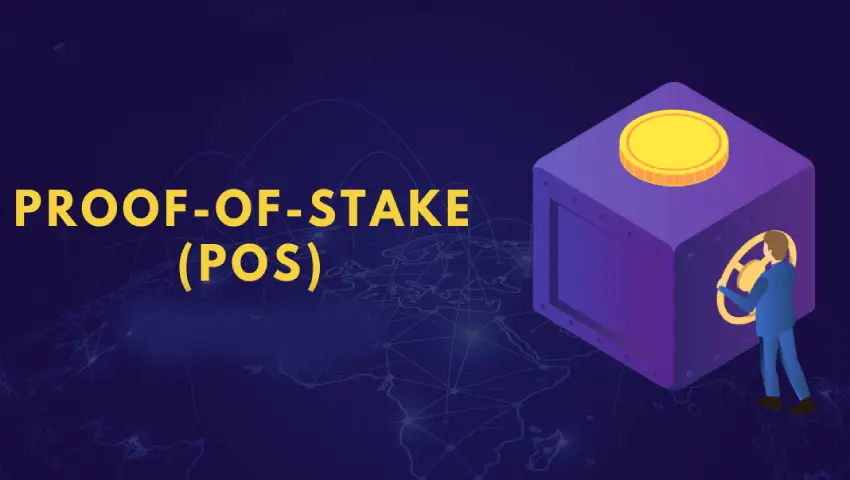
- 26/08/2025
- MyFinanceGyan
- 152 Views
- 2 Likes
- Cryptocurrency, Investment
Proof of Stake (PoS): Explained
Introduction:
Blockchains are designed to be decentralised, offering benefits like privacy, fewer points of failure, and independence from third-party control. However, one big challenge in a decentralised environment is ensuring that all transactions are valid and trustworthy. This is where consensus mechanisms come into play. They enable participants in the network to verify transactions while also earning rewards. The first widely used mechanism was Proof of Work (PoW), but today, the more popular and sustainable choice is Proof of Stake (PoS). So, what exactly is Proof of Stake, and how does it work? Let’s dive in.
What is Proof of Stake?
Proof of Stake (PoS) is a blockchain consensus algorithm that allows participants to secure the network by locking up, or “staking,” their digital assets. Here’s how it works:
- Participants stake their tokens as proof of commitment to the blockchain.
- They get the chance to be selected as validators for new blocks.
- Validators who correctly confirm transactions earn rewards in the form of crypto tokens.
- Validators who attempt fraud or improper validation risk losing part of their staked tokens.
In short, PoS aligns rewards and penalties to keep the system fair, secure, and efficient.
How Does Proof of Stake Work?
Staking Tokens:
- Users lock their crypto into a smart contract on the blockchain.
Validator Selection:
- Validators are chosen using a semi-random election system.
- Factors include the amount of tokens staked, how long they’ve been staked, and past performance as a validator.
Achieving Consensus:
- Multiple validators must agree for a block to be added.
- Typically, two-thirds (66%) of validators must validate a block before it is accepted.
This process ensures that blocks are verified fairly and efficiently, without the need for heavy computing resources.
Proof of Work vs Proof of Stake:
Advantages:
Advantages of Proof of Work (PoW):
- Increased Competition: Miners race to solve cryptographic puzzles, making the network secure.
- Open Participation: Anyone can join mining pools with existing hardware.
- Strong Security: Attacking requires 51% of computing power, which is prohibitively expensive.
Advantages of Proof of Stake (PoS):
- Energy Efficient: No need for power-hungry mining rigs—just stake tokens.
- Scalable: Blocks are verified faster since no complex puzzles are required.
- Direct Incentives: Misbehavior leads to loss of staked tokens, creating a clear reward-punishment model.
Disadvantages:
Disadvantages of Proof of Work (PoW):
- High Energy Consumption: Mining consumes enormous electricity—sometimes more than entire countries.
- Limited Scalability: Increasing difficulty slows down transaction processing.
- E-Waste: Miners frequently discard outdated hardware, contributing to pollution.
Disadvantages of Proof of Stake (PoS):
- Lock-in Periods: Staked tokens may remain locked for weeks or months, limiting liquidity.
- Token Hoarding: Large holders may stake more tokens to gain higher chances of selection.
- Unproven at Scale: Although Ethereum’s switch to PoS was successful, large-scale performance is still being tested.
Does Proof of Stake Lead to Centralisation?
Unlike PoW, where miners compete using increasingly powerful hardware (which can lead to centralisation by a few dominant players), PoS uses a semi-random validator selection system.
- More tokens staked = higher chance of being chosen, but safeguards exist to prevent monopolisation.
- This system ensures that even smaller participants still have an opportunity to validate blocks.
Thus, PoS generally promotes greater decentralisation than PoW.
How to Earn from Proof of Stake:
Acquire Tokens:
- Get a crypto wallet (e.g., Metamask or exchange wallet).
- Buy tokens from a crypto exchange and transfer them to your wallet.
Run a Validator Node:
- Create a node to participate directly in validation.
- Each blockchain has different requirements—check the official project documentation.
- Running a node allows you to earn block rewards directly.
Join a Staking Pool:
- If you don’t have enough tokens or resources, you can join a staking pool.
- These pools combine funds from multiple users to increase chances of rewards, which are then distributed among participants.
Is Proof of Stake Secure?
Yes, Proof of Stake is considered highly secure. In fact:
- It is the preferred mechanism for most new blockchains.
- Ethereum, the world’s second-largest cryptocurrency, shifted from PoW to PoS in The Merge (2022).
- This move reflects the confidence that developers and users place in PoS to maintain security while also improving scalability and sustainability.
Final Thoughts:
Proof of Stake has quickly become the dominant consensus mechanism in blockchain technology. It offers energy efficiency, scalability, and decentralisation—qualities that are essential as the crypto market expands. Whether you become a validator by running your own node or simply participate in a staking pool, PoS provides accessible ways to earn rewards while supporting blockchain networks. With Ethereum & many other projects adopting it, PoS is shaping the future of crypto.
Start investing in cryptocurrencies today!
Open a free account on CoinDCX: https://join.coindcx.com/invite/n75xR
Disclaimer: The views expressed in this article are personal and for educational purposes only. They are not intended as financial or investment advice.



